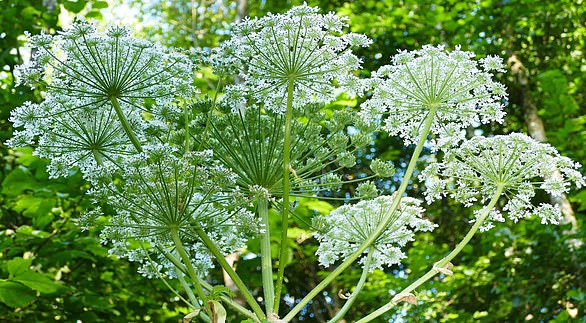Urgent warning for Britons over rise in giant hogweed: ‘Britain’s most dangerous plant’ could give you and your pets pus-filled blisters the size of a golf ball, experts warn – here’s how to spot it
Experts warn that Britain’s ‘most dangerous plant’ is now at its hottest and children, parents and pets could suffer horrific burns.
The sap of the giant hogweed causes our skin to lose its ability to protect itself from the sun, causing victims to develop painful blisters when exposed to daylight.
And because it does not cause direct pain, those affected can still enjoy the nice weather without being aware that anything is wrong until the first burns appear.
Now experts are warning that the plant has reached its largest size.
And now that the school holidays are starting and Britons are spending more time outdoors, the risk of injury increases.
Experts warn Britain’s ‘most dangerous plant’ is now at its hottest and will cause horrific burns to children, parents and pets
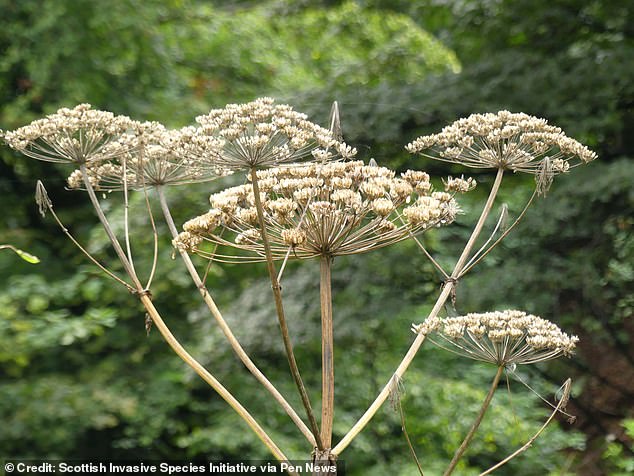
The sap of the giant hogweed causes our skin to lose its ability to protect itself from the sun, causing victims to develop painful blisters when exposed to daylight.
Callum Sinclair, Project Manager at the Scottish Invasive Species Initiative, said: ‘We’re seeing the first seedlings emerge sometime in March-April.
‘And of course they are smaller at that time of year, so we do most of the work to control them, because they are smaller and less dangerous.
‘By this time of year they are quite impressive large plants, but also impressive dangerous plants, of course.
“They’re probably at their maximum height now and in mid-summer, July and August.”
Even the professionals are happy to keep their distance at the moment, he added.
He said: ‘The reason we treat them earlier in the season is because they are obviously smaller and less dangerous because we can get to them with protective clothing.
‘But once you get to the heights they are now in the summer, and they’re big with big leaves, it’s dangerous to get in between them.
‘So now, in the summer, when the schools are obviously on holiday and people are active in the summer, it’s time to really step away from it.’

Because it does not cause direct pain, those affected can continue to enjoy the nice weather without being aware of any problem until the first burns appear.
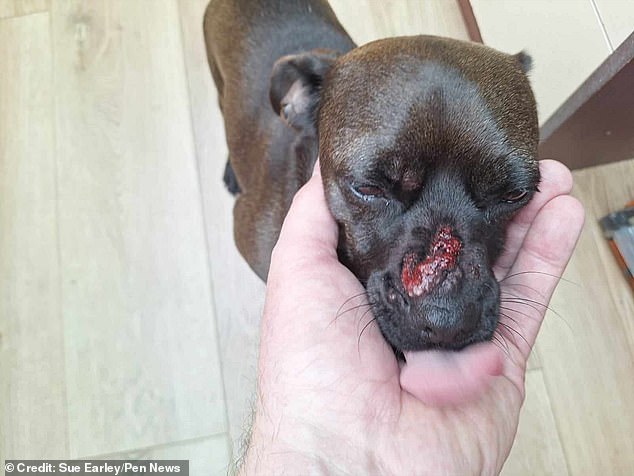
In Fordingbridge, Hampshire, it left a Chihuahua-pug cross, Peanut, with ‘oozing blisters that looked red and painful’, according to owner Sue Earley
The plant is not only common in Scotland, but throughout the United Kingdom.
Chloe Douglas, from Sunderland, Tyne and Wear, woke up with a rash on her hands and neck that grew into blisters ‘the size of grapes’ after touching the plant.
“The recovery was incredibly painful,” she said.
On the other side of England, in Fordingbridge, Hampshire, the disease left a Chihuahua-pug cross, Peanut, with “oozing blisters that looked red and painful,” according to owner Sue Earley.
And in Somerset, mother Samantha Morgan recently described how her two-year-old son was left screaming in pain as doctors cut away his giant hogweed blisters.
Injuries have also been reported in Wales and Ireland, both north and south.
Some of the most horrific cases occurred in Scotland itself.
Last summer, Ross McPherson was left with a blister the size of an orange on his feet and struggled to care for himself after walking past a giant hogweed in Dunbar, East Lothian.
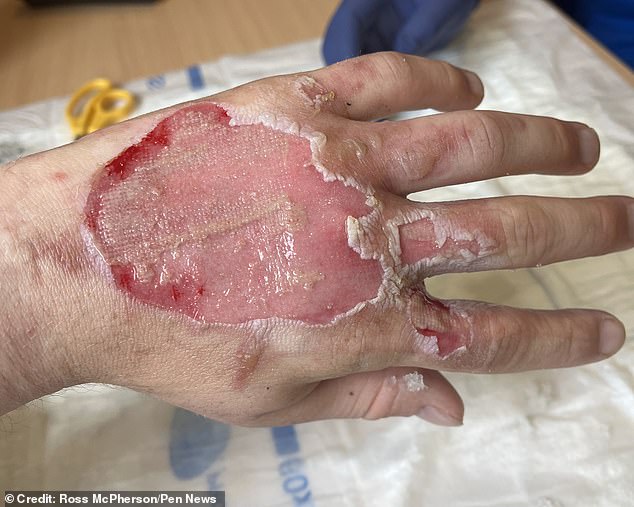
Experts have warned that the plant is at its largest and with the school holidays starting and Britons spending more time outdoors, the risk of injury is increasing.
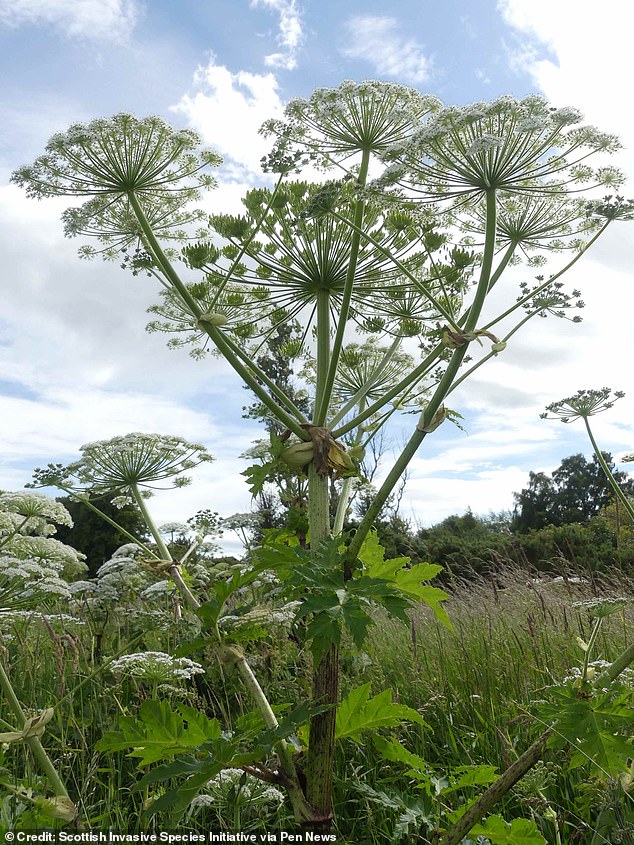
The giant hogweed is native to the Caucasus, but was introduced into Britain as an ornamental plant in 1817 and its distribution is now excessive.
He described the pain as “absolute hell.”
And in Glasgow, 80-year-old retired lifeboat officer George Parsonage recently said he was still bothered by an old wound from a giant hogweed from the 1960s.
Mr Sinclair stressed that giant hogweed often causes long-term damage.
He said: ‘This plant can cause painful blisters or burns, and those symptoms can come back every year.
‘So it’s not like they can only harm you once.’
He added: ‘And if you do come into contact with it and get burned, you need to cover the point of contact because the sunlight will make it worse.’
“And then you should probably wash the area with soap and water to remove the sap.”
The giant hogweed originates from the Caucasus, but was introduced into Britain as an ornamental plant in 1817. Its distribution has now become excessive.
Mike Duddy of the Mersey Basin Rivers Trust said in 2015 that the giant hogweed is ‘without doubt the most dangerous plant in Britain’.
Mr Sinclair said the plant is most easily distinguished from its native cousin, the common hogweed, by its enormous size: it can grow to 2.5 to 3 metres tall.
He encouraged people who saw the plant to report it to their local authority or the responsible landowner. People in Scotland can also report it to the Scottish Invasive Species Initiative.

